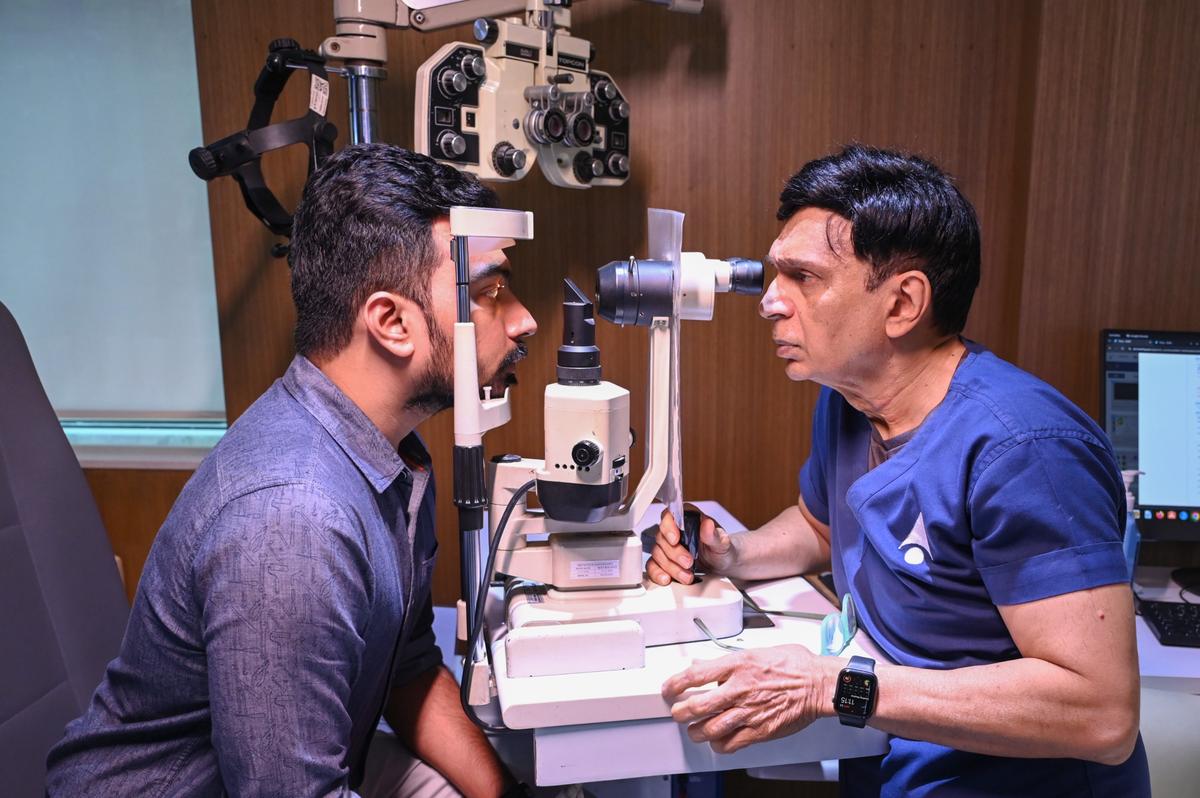Sometimes, it is the small innovations in health care, the repurposing of familiar procedures that holds the hope for a revolution. It is in the latter category that Pinhole Pupilloplasty (PPP) falls. Having been described initially in 2018, it has only recently emerged as a possible simple, low-cost alternative to corneal transplants.
Amar Agarwal, chairman, Dr. Agarwal’s Eye Hospitals, who first described the procedure in 2018, says it was developed only as a technique to correct astigmatism and abrasions. “For seven years now, we have been performing PPP to correct high levels of astigmatism – a condition where the cornea is conical. Since then, the technique has been picked up by ophthalmologists across the world…in Russia, Vietnam too, apart from India. There is a small learning curve, but it will be easy enough for eye surgeons,” he explains. Those who have already started doing the PPP procedure will just have to apply it for corneal transplant situations, he adds.
Pinhole Pupilloplasty
| Photo Credit:
Special Arrangement
How PPP works
PPP uses the simple optics principle – of controlling the light that enters the eye, in order to clarify vision. The cornea is the transparent outer layer of the eye. It bends (refracts) light to help focus it, and the pupil is the dark circular opening in the centre of the iris. Its role, like the aperture in a camera, is to adjust size to control how much light enters the eye. While the corneal transplant tries to address the damage to the cornea, PPP tries to restore vision by tackling the pupil. In PPP, the size of the pupil is reduced surgically, to 1.5 mm, thus blocking peripheral vision and allowing focused central rays inside the eye, ensuring that the image is clear and without distortion.
This can bring the patient back to near 20/20 vision immediately after surgery, Dr. Amar says. For instance, Subbalakshmi, a patient who has travelled from Australia to get the PPP procedure done in Chennai, says the moment the bandages were removed, three hours after surgery, she could see very well. “Almost immediately, I knew the sharpness of my vision had improved significantly after surgery. If I was a 5-6 on a visual scale pre-surgery, after the procedure, I suddenly went up to a 9.5,” she says.

Dr. Amar Agarwal examining a patient in his hospital
| Photo Credit:
Thamodharan B
Summoning another common metaphor to explain the scenario, Dr. Amar says: “If you consider the cornea as the front window, and let’s say it becomes damaged due to injury, or there is a tear, there is an opaque area, or the cornea is conical, which is what happens in astigmatism. What will happen is that the rays of light will not reach the retina comfortably. All these patients are going to need eye transplantation at some point.”
Satisfactory results
The team at the hospital even worked with optics expert Jack T. Holladay to develop a pinhole pupil gauge, a tool used to gauge the pupil size suitable for each patient.
“When we did corneal transplants, we found that not all patients regained good vision, some continued to have a number of problems still – even if they could see, the vision was blurry,” explains Dr. Amar. “That is when we said, ‘hold on, why are we doing a transplant in this case, will PPP work better?’ When we started seeing great results using PPP on these patients, it became clear that this was indeed a viable alternative to corneal transplants.” Since then, they have done a 100 procedures, and the results have been satisfactory. In contrast, corneal transplants come with chances of rejection, a long healing time, the need to take drugs for an extended period, and see-sawing visual acuity…in fact, even no guarantee of restoration of vision,” he adds.

While children with corneal injuries are ideal candidates for the procedure, it works on adults who have had corneal tears or scar formation as well, apart from injuries. “In fact, if I have to choose between a corneal transplant and a PPP, I opt for the latter. Even when we perform corneal transplants, we do an extra PPP procedure, to improve the chances for the patient to see better,” Dr. Amar adds.
Not all people waiting for a transplant will benefit from PPP, clarifies Soundari S., regional head, clinical services, Dr. Agarwal’s Eye Hospitals. Some people will still require corneal transplants, but using PPP on those who will benefit from this procedure will make it possible to reallocate the available donor corneas to those who need them. Given that globally, there are more than 20 million people waiting for a donor cornea, and there is a desperate shortage of corneas, any other technique that can restore vision will come as a boon to patients, Dr. Amar says.
